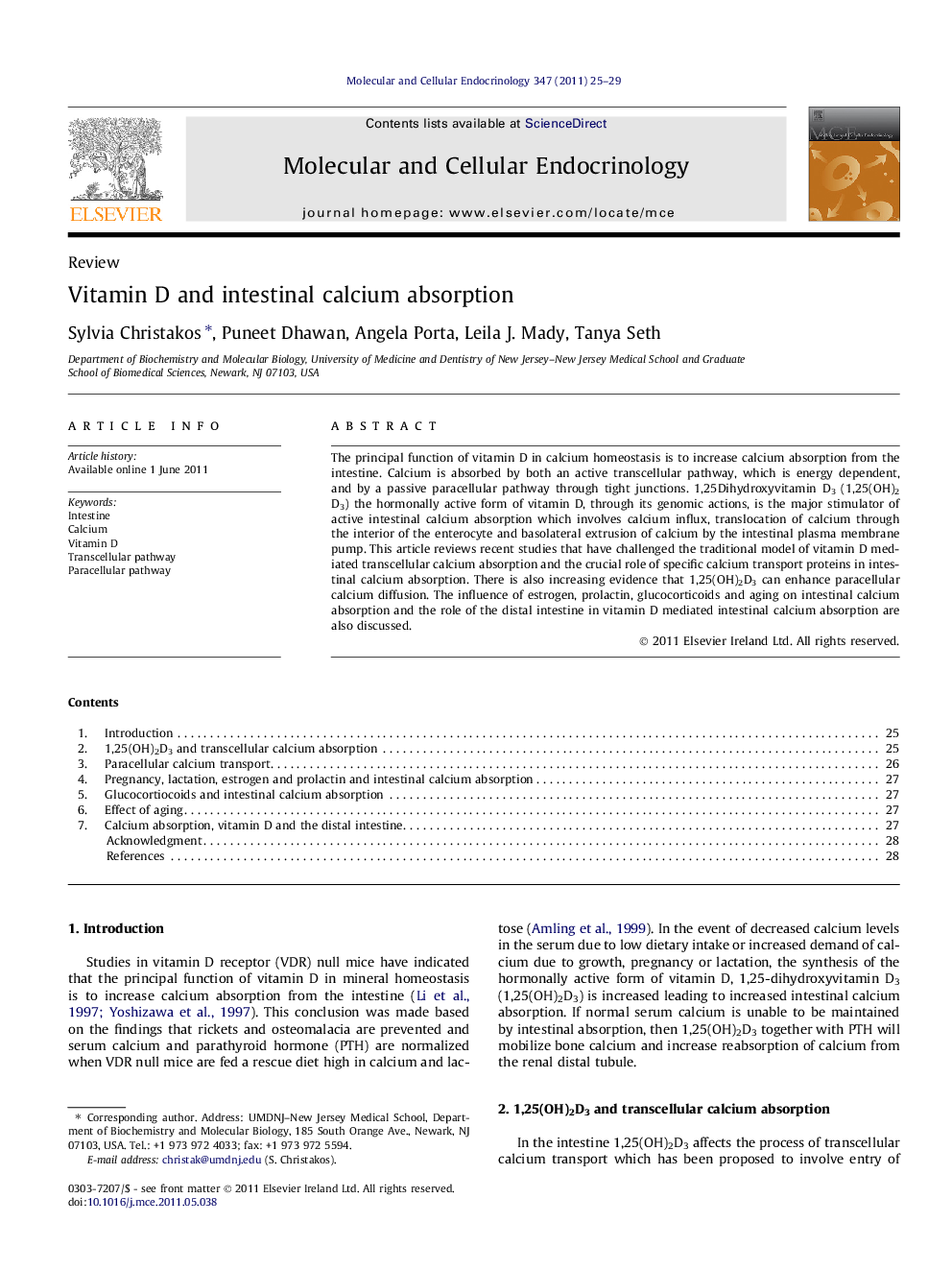| Article ID | Journal | Published Year | Pages | File Type |
|---|---|---|---|---|
| 2196456 | Molecular and Cellular Endocrinology | 2011 | 5 Pages |
The principal function of vitamin D in calcium homeostasis is to increase calcium absorption from the intestine. Calcium is absorbed by both an active transcellular pathway, which is energy dependent, and by a passive paracellular pathway through tight junctions. 1,25Dihydroxyvitamin D3 (1,25(OH)2D3) the hormonally active form of vitamin D, through its genomic actions, is the major stimulator of active intestinal calcium absorption which involves calcium influx, translocation of calcium through the interior of the enterocyte and basolateral extrusion of calcium by the intestinal plasma membrane pump. This article reviews recent studies that have challenged the traditional model of vitamin D mediated transcellular calcium absorption and the crucial role of specific calcium transport proteins in intestinal calcium absorption. There is also increasing evidence that 1,25(OH)2D3 can enhance paracellular calcium diffusion. The influence of estrogen, prolactin, glucocorticoids and aging on intestinal calcium absorption and the role of the distal intestine in vitamin D mediated intestinal calcium absorption are also discussed.
► A principal function of vitamin D is to increase intestinal calcium absorption. ► Calcium is absorbed by both active transcellular and passive paracellular pathways. ► Pregnancy, lactation and glucocorticoids affect intestinal calcium transport. ► In aging intestinal calcium transport declines. ► 1,25(OH)2D3 increases intestinal calcium transport in proximal and distal intestine.
